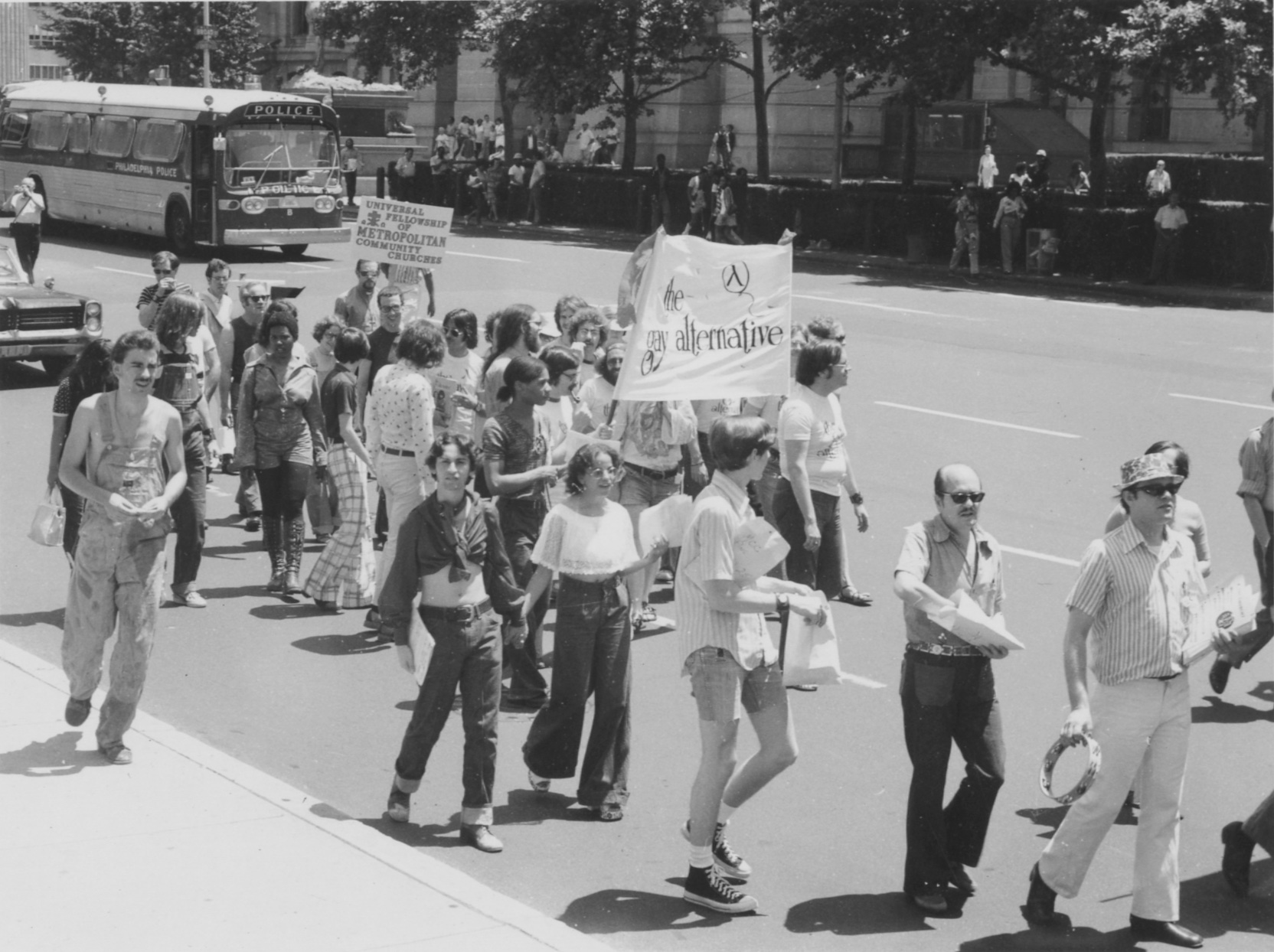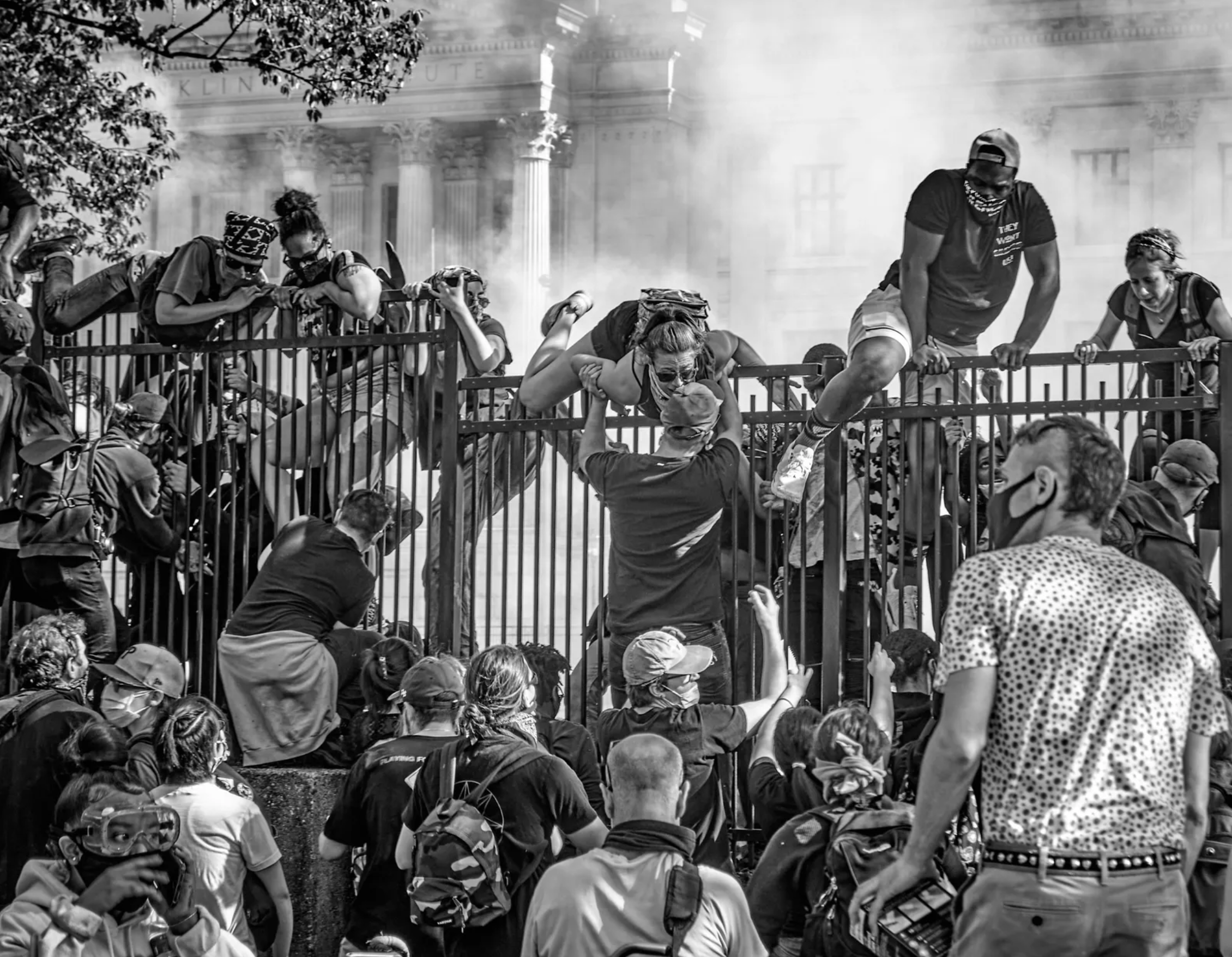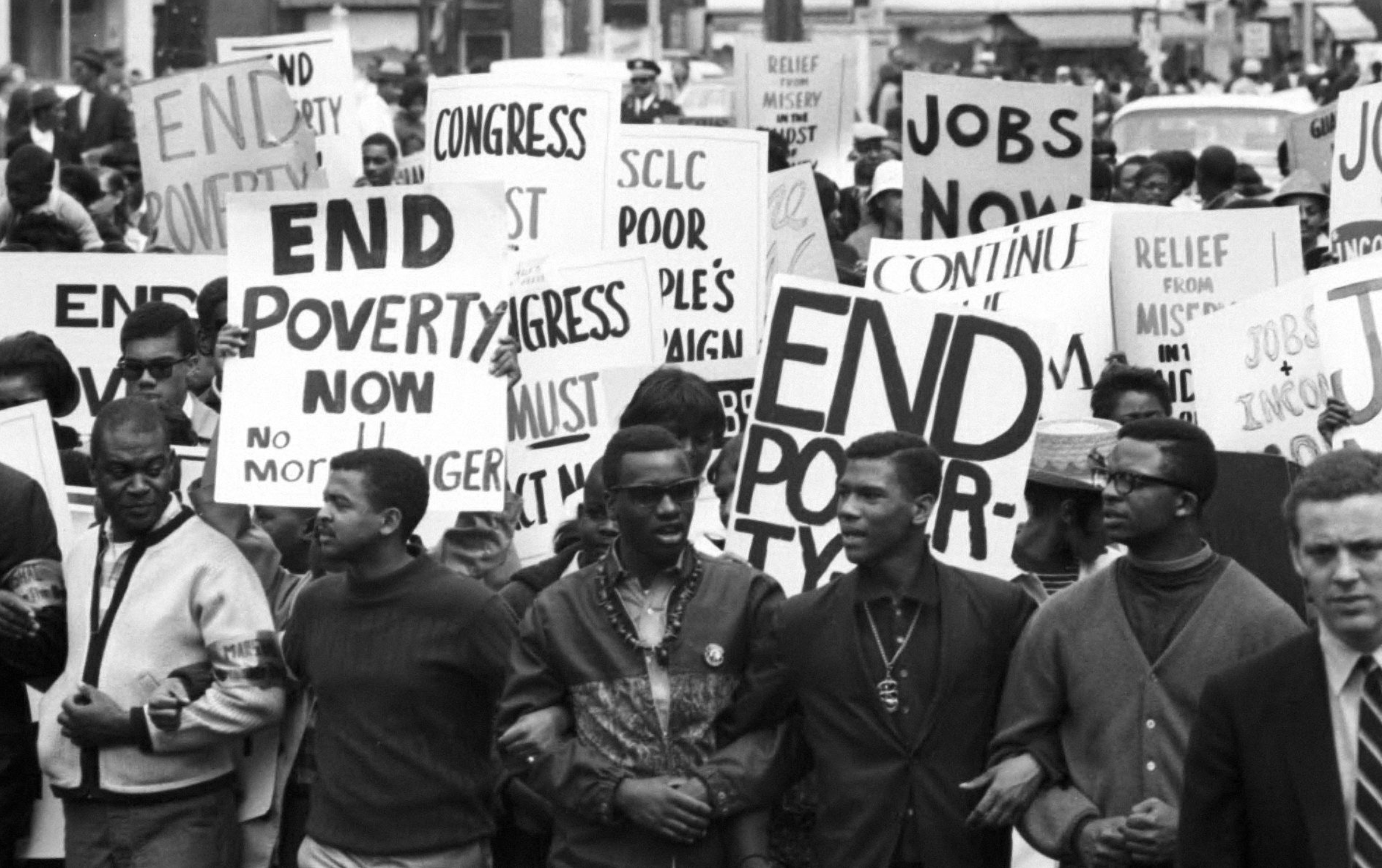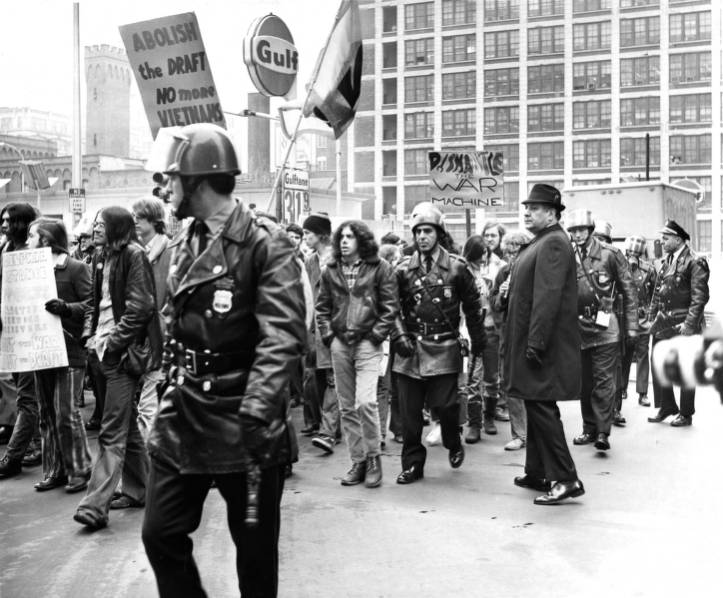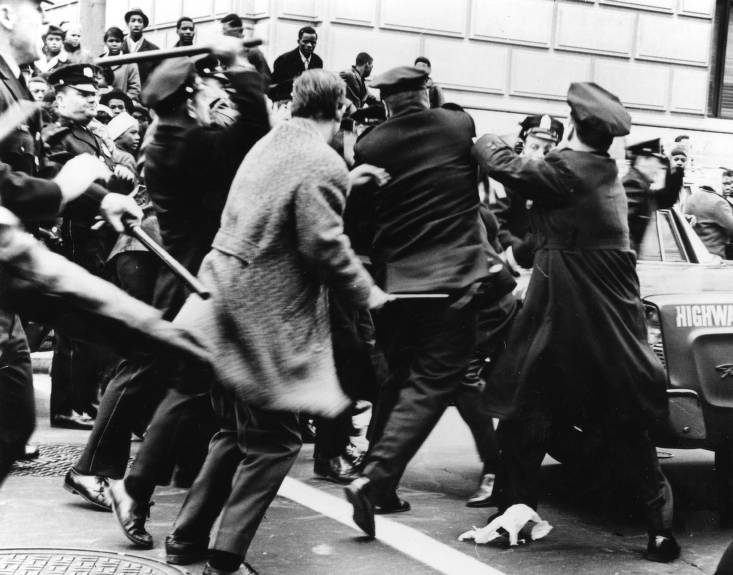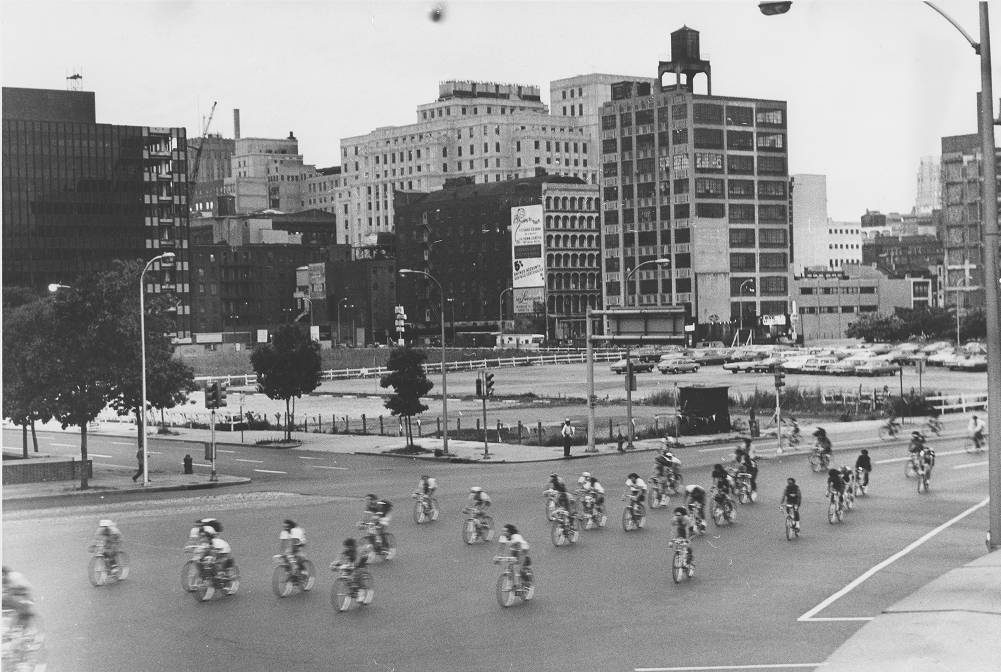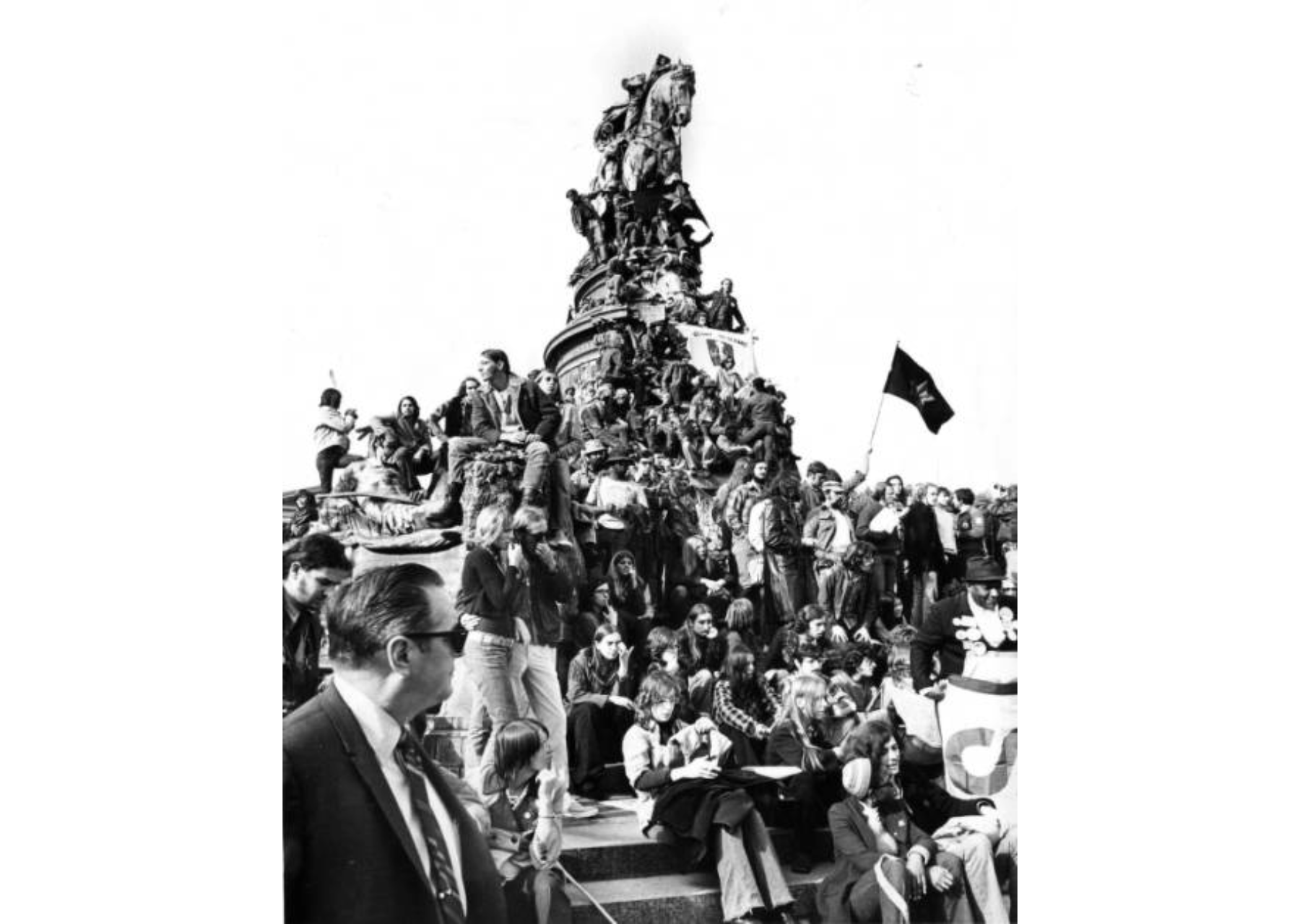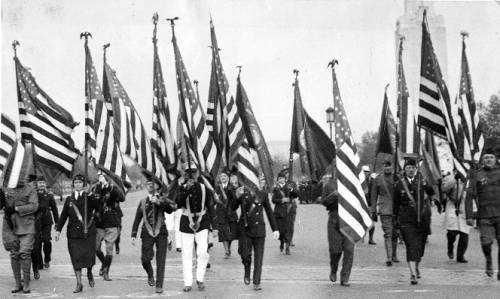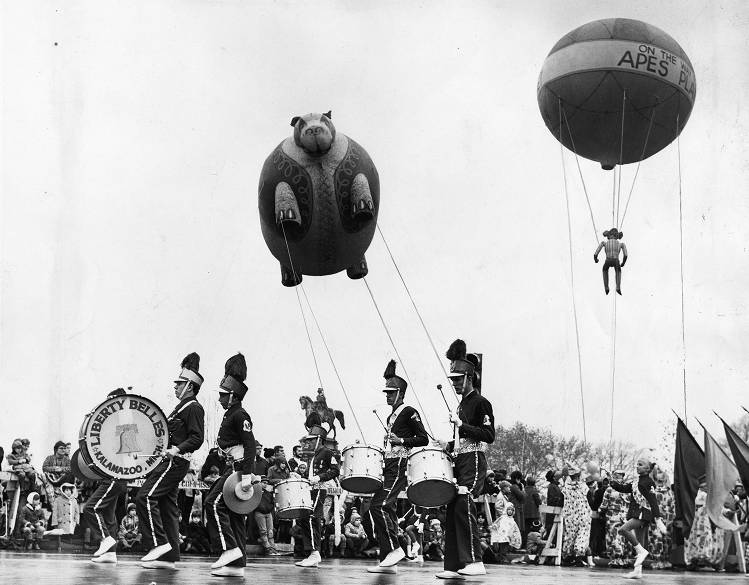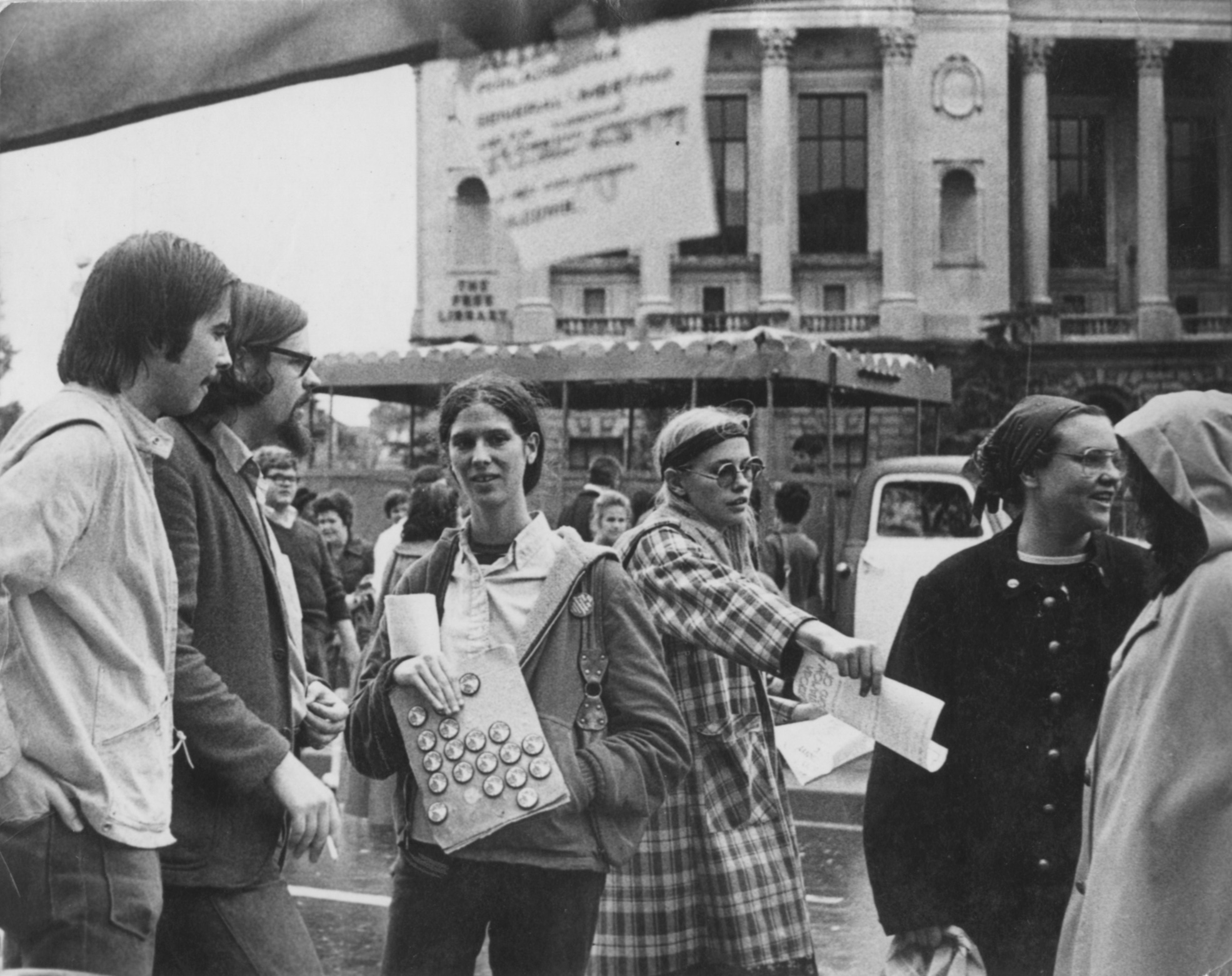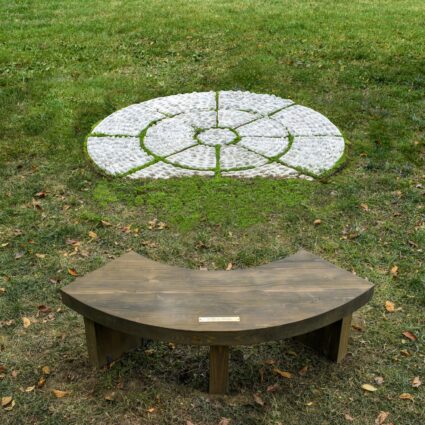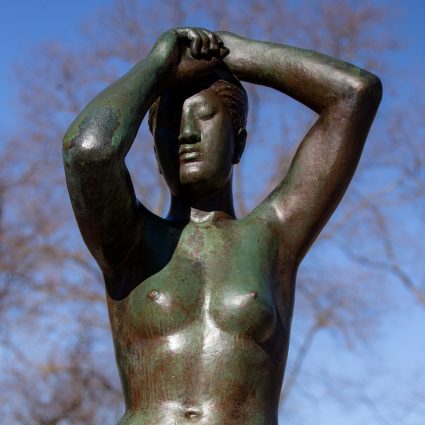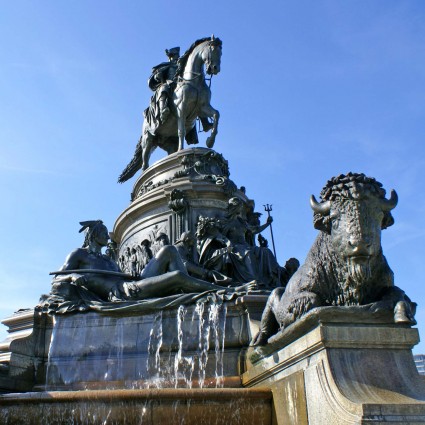Bar None was an installation by Philadelphia-based artist and educator Nicolo Gentile that honored the Benjamin Franklin Parkway’s legacy as a site of collective assembly and action. It offered a testament to the overlapping movements and voices that have surged through this civic spine in pursuit of justice, celebration, and change. The installation was interspersed with colored acrylic panels etched with images sourced from historic archives. The manipulated images reflected moments of protest, pride, and public gathering.
The Philadelphia Inquirer: “What’s that cascade of bright barricades at Maja Park for?”
The horizontal installation was a winding procession of transformed steel barricades that rose and sank into the earth like a wave. It created a path-like structure that invited viewers to walk alongside it, not solely to observe, but to move through history itself.
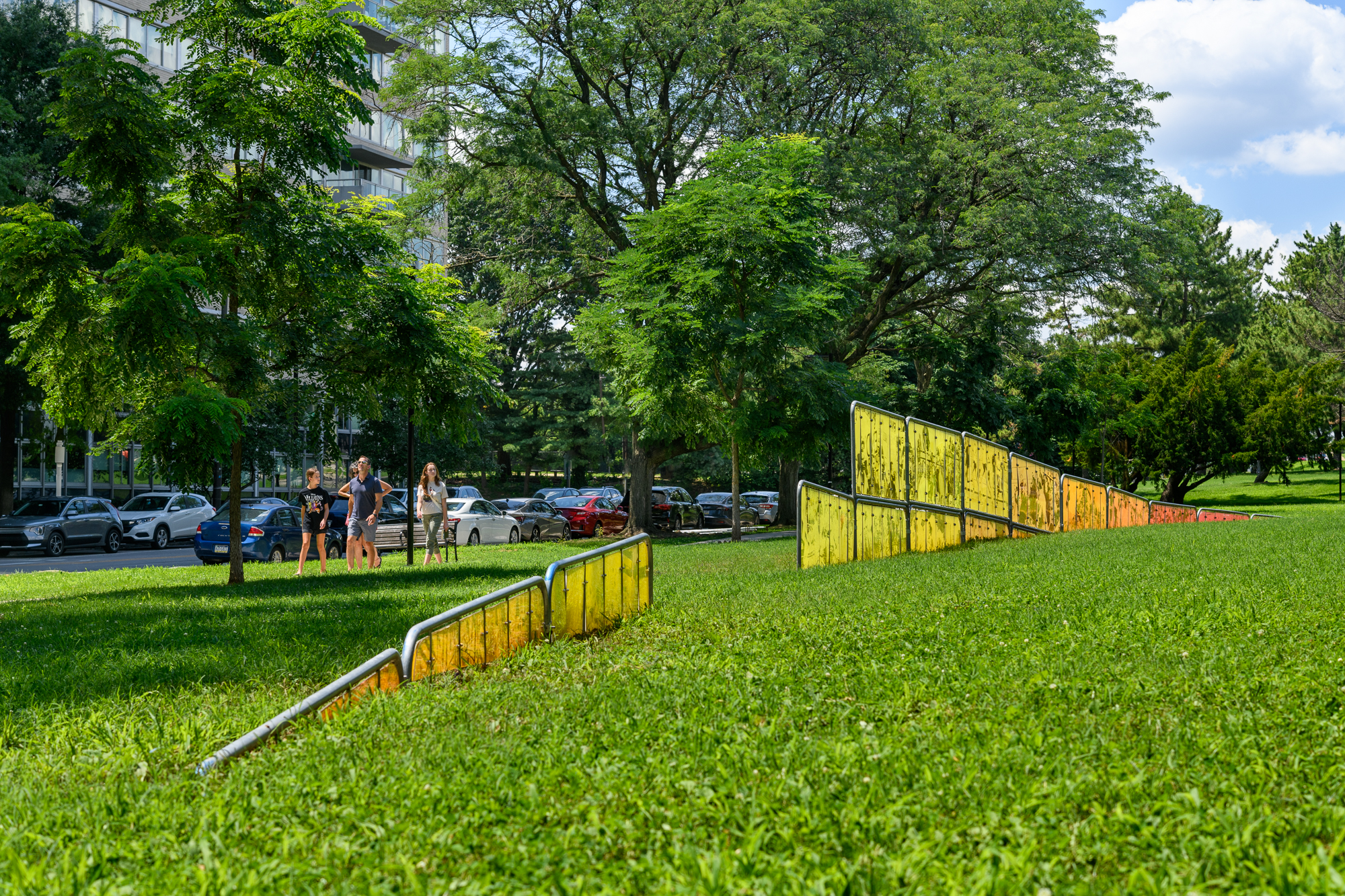
Rather than a fixed monument, the artist considered Bar None a dynamic site of reflection, where the lines between protest and celebration blur and where the act of gathering itself is honored. It reaffirmed the Parkway as a vital stage for collective care, memory, and civic imagination.
This sculpture was selected for Art on the Parkway, a juried commission organized by the Association for Public Art in partnership with the Parkway Council and Philadelphia Parks & Recreation. The annual program invites artists, designers, and other creatives to propose a temporary public art installation for Maja Park on Philadelphia’s Benjamin Franklin Parkway as part of the Parkway to Park Festival. Support for the project was provided, in part, by AIR Communities/Park Towne Place and Prudent Management Associates.

ABOUT THE ARTIST: Nicolo Gentile is an artist and educator based in Philadelphia, PA. He holds an MFA in Sculpture from the Tyler School of Art and Architecture at Temple University and a BFA in General Fine Arts from the Pacific Northwest College of Art.
Gentile’s work has been exhibited nationally and internationally at venues including The Athenaeum, Commonweal Gallery, Temple Contemporary, and Automat (Philadelphia); Fragment Gallery and Trestle Gallery (New York); The Vault (Denver); LVL3 (Chicago); Portland Contemporary and Carnation Contemporary (Portland, OR); SOIL and The Vestibule (Seattle); TSA LA, Cannery Village Gallery, and Last Projects (Los Angeles); as well as exhibitions in Paris and Melbourne.
He is a recent recipient of the Velocity Fund, supported by The Andy Warhol Foundation for the Visual Arts, and is currently an Artist in Residence at the Fitler Club in Philadelphia. Gentile teaches at the Tyler School of Art and Architecture and has served as a guest lecturer at the Pacific Northwest College of Art, Portland State University, and Nazareth College.
Archival Images Used in the Artwork
The first Gay Pride Parade in Philadelphia was held in June of 1972. This image is taken from the 2nd Gay Pride Parade in 1973. It shows paraders entering the Parkway as they pass City Hall. Early Pride Parades were sometimes called Gay Liberation Marches or Gay Freedom Marches and focused on liberation and equality. This photo was taken by Harry Eberlin, a prolific photographer documenting the gay and lesbian community in Philadelphia in the 60s, 70s, and 80s.
Photo courtesy of the William Way Foundation John J. Wilcox Jr. Archives
In May 2020, protests erupted around the country in response to the murder of George Floyd, a Black man, by the hands of a White policeman in Minneapolis. People took to the Parkway to express their anger and demand change. In this photo, protestors climb over the I-676 fence next to The Franklin Institute.
Photo courtesy of Isaac Scott
The Poor People’s Campaign was a national movement originally organized by Martin Luther King, Jr. to seek economic justice for those living below the poverty line in the United States. The non-violent campaign centered around issues of employment and housing. In this image from 1968, demonstrators marched down the Benjamin Franklin Parkway to a rally at Independence Mall.
Photo courtesy of the Free Library of Philadelphia
By the late 1960s, opposition to the Vietnam War – which began in the mid 1950s and lasted nearly 20 years – had intensified across the United States, sparking widespread protests. This 1970 photo shows a heavily policed demonstration in Philadelphia, where then–Police Commissioner (and future mayor) Frank Rizzo watches over demonstrators.
Photo courtesy of the Special Collections Research Center. Temple University Libraries. Philadelphia, PA.
In 1967, thousands of Black high school students in Philadelphia staged a walkout to protest the systemic inequalities they faced in the city’s public schools. Together they marched to the Board of Education building on the Parkway. This photo captures a charged and chaotic moment during the demonstration, with police officers closing in on a student, batons drawn.
Courtesy of the Special Collections Research Center. Temple University Libraries. Philadelphia, PA.
The 1970s saw growing advocacy for bicycle safety and infrastructure in Philadelphia. This 1972 photo shows a bicycle race in the city — the same year the Philadelphia Bicycle Coalition was founded.
Courtesy of the Special Collections Research Center. Temple University Libraries. Philadelphia, PA.
This photo shows a 1971 Vietnam War protest outside the Philadelphia Museum of Art on the Benjamin Franklin Parkway. Protestors are seen gathering at and climbing the Washington Monument.
Courtesy of the Special Collections Research Center. Temple University Libraries. Philadelphia, PA.
In 1933, President Franklin D. Roosevelt issued a proclamation recognizing Armistice Day — now known as Veterans Day — in commemoration of the end of World War I on November 11, 1918. This photo from that year shows the massed colors leading a procession past Logan Square on the Parkway during Philadelphia’s first observance of Armistice Day.
Courtesy of the Special Collections Research Center. Temple University Libraries. Philadelphia, PA.
In this photo, a group of people practices a folk dance together atop the East Terrace of the Philadelphia Museum of Art in the summer of 1972.
Courtesy of the Special Collections Research Center. Temple University Libraries. Philadelphia, PA.
In this photo from November 1968, drummers march beneath giant balloons along the Benjamin Franklin Parkway during the Philadelphia Thanksgiving Day Parade, an annual tradition that began in 1920.
Courtesy of the Special Collections Research Center. Temple University Libraries. Philadelphia, PA.
Earth Day April 22, 1970 – Earth Walk. Participants gather in front of the Free Library on the Parkway to mark the first-ever Earth Day, a nationwide event on April 22, 1970. Events culminated in a mass rally and concert at Fairmount Park’s Belmont Plateau, where over 30,000 came together in celebration and protest.
Courtesy of the University of Pennsylvania’s University Archives and Records Center. Photo by Frank Ross.
